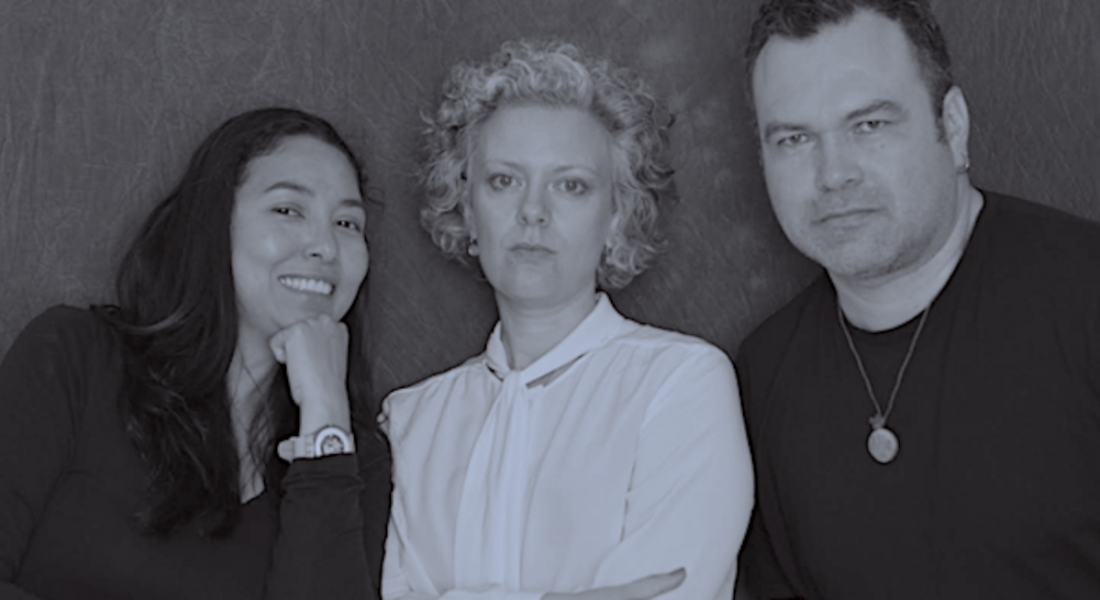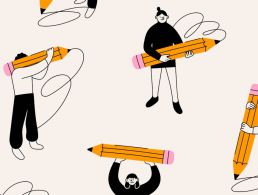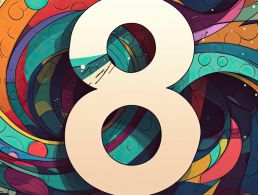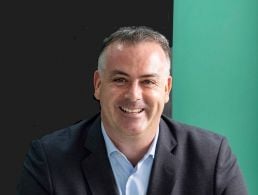Have you ever pictured a robot and an art easel in the same room? A new gallery is bringing that to reality by linking artists with machines.
The Cueva Gallery – described as the first of its kind in Ireland – is a gallery entirely devoted to artwork made or inspired by artificial intelligence (AI). It was set up by three people with “a passion for art and technology” – Dr Ernesto Diaz-Aviles, Dr Claudia Orellana-Rodriguez and Beth Jochim.
We spoke to Jochim – the director of Dublin-based Cueva – about her vision for the gallery and why she and her colleagues – who have experience across machine learning (ML), creative AI, arts and humanities research and innovation – came together to bring this project to life.
From Libre AI to Cueva
Cueva isn’t the first brainchild of Diaz-Aviles, Orellana-Rodriguez and Jochim. In fact, the idea for it came to fruition while the three were working together on Libre AI – a Dublin-based company striving to make the benefits of AI and ML more accessible to the public.
As Jochim told us, it was through the trio’s work at Libre AI that they “noticed how artists and AI experts suffer, in general, from a lack of communication between each other”.
“This inspired us to work toward bridging the gap and bringing to life a space to nurture new ideas and collaborations,” she said.
What that involves, Jochim explained, is working with “tech-savvy artists” to grant them exposure in new markets, but also with “traditional artists” who can explore AI without needing to know how to code.
‘AI allows us to reach deepness and novelty in a way that other forms of art fail to do’
– BETH JOCHIM
The other crucial ingredient for Cueva, she said, is education. For Jochim, that means educating and engaging the public on possible implications of AI and ML through visual art.
“I consider education [to be] crucial,” she said. “Basically, we are talking about art pieces that can capture the essence of a business, as well as a private moment or memory, and transform it into something special with a very high degree of personalisation.”
Inviting people from outside tech
Seeing the terms AI and art side by side might give you pause for thought – and you wouldn’t be the first. But that’s precisely the reason Jochim and her co-founders have put their heads together on this project.
As she described it, their goal is to “democratise the benefits of AI”, which involves “bringing its power to art and its creators”.
“While digital art is not new to the public and has been around for a long time, AI art is relatively new and may seem too complex or confusing to people outside tech,” she explained.
“Our main interest in creating Cueva is to explore, understand and expand the interaction between AI and human creativity.
“We want to dispel the myth that art and technology cannot work together and make AI art more approachable for those who are not tech savvy.”
How is AI impacting a career in art?
Bringing AI into the world of artistic expression is going to impact people working in the industry. For example, Jochim said that through the questions the tech raises, new roles have cropped up in such areas as ethics, ownership and authorship.
“Then it is pushing to rethink the concepts of creativity and art also – under the point of view of the machine,” she added. “AI is bringing potentially infinite possibilities of image generation and new aesthetics, as well as a narrative that captures our digital age better than others.
“This is shifting the work of curating art towards the artists themselves, as they are the first to select and organise their own work.”
But perhaps the most surprising effects observed in the space so far, according to Jochim, are the associated costs.
“AI Art is getting the attention of galleries and auction houses such as Christie’s, Phillips and Sotheby’s,” she said, “with a blast in 2018 where a painting generated by AI was sold for the unexpected price of $432,500, which was almost 45 times higher than its estimate of between $7,000 and $10,000.”
The inner workings of the Cueva Gallery
So, what actually takes place inside Cueva’s walls? Jochim painted a picture for us. Alongside an in-house artistic collective of scientists and engineers called Diavlex, a machine ‘paints’ by successively creating brushstrokes and applying them to a canvas – just like an artist would.
With sophisticated technology employing algorithms implemented by deep neural networks, the creative process plays out like “an apprentice-master relationship”, Jochim explained.
“The two players in the game are called Generator and Discriminator,” she said. “From an empty canvas, the apprentice (Generator) will produce paintings that the master (Discriminator) will judge based on her experience and previous knowledge as real pieces of art or not.
“The apprentice will get better and better based on the master’s feedback, until reaching a level where the master will not be able to discriminate between her apprentice’s work and a good piece of art.”
When #AI and #tradition meet creating something new and beautiful: this is #Ixchel Collection by @diavlex_ai . It is more than a collaboration, it is when past and present create a meaningful dialogue to build the future #aiart #technology #digitalart #ArtificialIntelligence pic.twitter.com/B89lC04iAY
— Cueva Gallery (@cuevagallery) March 11, 2020
The creative side of AI
Though it’s clearly a deeply technical mechanism, Jochim emphasised her belief in AI’s distinct – and deserved – role in the creative process.
She mentioned its proven potential as a “creative partner” for artists, aside from its uses as a tool and a medium. Coding AI algorithms, for example, can help artists to spend more time on actually making their art.
“Some artists that use a robotic arm, for example, tend to see AI and ML as collaborators that help to lose their mindset and move towards new forms of creative expression,” she explained.
All of this is something she sees as giving “new insights about subjective preferences, overcoming self-imposed limits like palette colour and composition”.
‘We want to dispel the myth that art and technology cannot work together’
– BETH JOCHIM
Some artists have even completely replaced traditional means of making art with technology. “They think that machine-generated works have greater depth and potential, and an expressive ability that cannot be achieved except through the use of technology,” Jochim said.
“AI and ML bring art to life in a new compelling way and allow them to convey deep meanings on issues that affect both our existence and our relationship with technology.”
A collaboration rather than a competition
At the artistic intersection between humans and AI, Jochim stressed the importance of remembering that “tradition and technology are not in competition”.
“We envision AI art not only as avant garde or niche in the art field, but as an opportunity for both creatives and innovators to establish new, effective forms of collaboration.
“We are already witnessing the birth of new collaborations – for example, between AI artists and fashion designers. It allows us to reach deepness and novelty in a way that other forms of art fail to do.
“In a nutshell, I think that pushing art towards a dialogue with other industries can promote new visions, thinking out of the box, problem solving and creativity in its different manifestations.”




